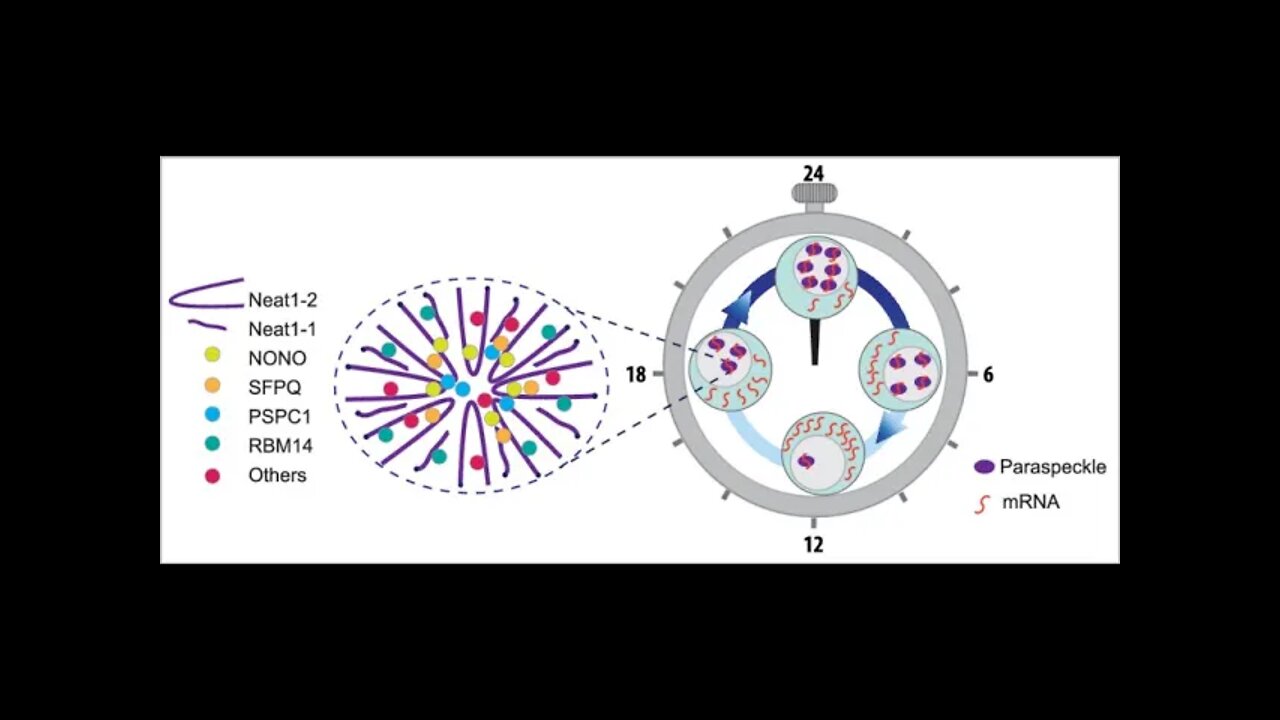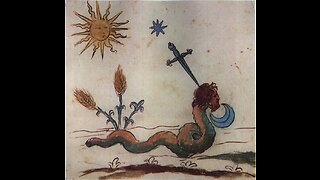Premium Only Content

Paraspeckles
Prion-like domains in RNA binding proteins are essential for building subnuclear paraspeckles
https://www.ncbi.nlm.nih.gov/pmc/articles/PMC4539981/
Borreliae, Human Relapsing Fever, Parasite -Vector-Host Relationships
https://www.ncbi.nlm.nih.gov/pmc/articles/PMC441260/pdf/bactrev00144-0058.pdf
Extracellular vesicles as modulators of cell-to-cell communication in the healthy and diseased brain.
Abstract
Homeostasis relies heavily on effective cell-to-cell communication. In the central nervous system (CNS), probably more so than in other organs, such communication is crucial to support and protect neurons especially during ageing, as well as to control inflammation, remove debris and infectious agents.
Emerging evidence indicates that extracellular vesicles (EVs) including endosome-derived exosomes and fragments of the cellular plasma membrane play a key role in intercellular communication by transporting messenger RNA, microRNA (miRNA) and proteins.
In neurodegenerative diseases, secreted vesicles not only remove misfolded proteins, but also transfer aggregated proteins and prions and are thus thought to perpetuate diseases by 'infecting' neighbouring cells with these pathogenic proteins. Conversely, in other CNS disorders signals from stressed cells may help control inflammation and inhibit degeneration. EVs may also reflect the status of the CNS and are present in the cerebrospinal fluid indicating that exosomes may act as biomarkers of disease.
That extracellular RNA and in particular miRNA, can be transferred by EV also indicates that these vesicles could be used as carriers to specifically target the CNS to deliver immune modulatory drugs, neuroprotective agents and anti-cancer drugs. Here, we discuss the recent evidence indicating the potential role of exosomes in neurological disorders and how knowledge of their biology may enable a Trojan-horse approach to deliver drugs into the CNS and treat neurodegenerative and other disorders of the CNS.
Gammaherpesvirus Infection of Human Neuronal Cells
https://pubmed.ncbi.nlm.nih.gov/26628726/
Proteomics analysis of amyloid and nonamyloid prion disease phenotypes reveals both common and divergent mechanisms of neuropathogenesis
https://pubmed.ncbi.nlm.nih.gov/25140793/
There's no such things as viruses. They are "lytic" ~bacterial associated, stress induced morphological forms of infinite antigenic variations in less than 2 seconds under antibiotic stress!
Remember why Relapsing Fever relapses.
Lyme bacteria Cyst formation with detail https://youtu.be/lVmCa70bAxE
Lyme Net Europe.org
https://www.lymeneteurope.org/forum/viewtopic.phpf=13&t=5147&start=20&fbclid=IwAR18bMATRoubbcMuRdQfJxmDVA3aFuKkTVlGdC3UF6X2ZFDTp1uuLq4Srp0
-

Epstein Borreliosis AIDS
2 years agoMel Thornburg, Sepsis
1.55K12 -
 2:06:05
2:06:05
"What Is Money?" Show
2 days agoTrump Family Bitcoin Bet Will Trigger Nation-State FOMO w/ Matt Prusak (CEO American Bitcoin)
13.4K -
 1:04:36
1:04:36
Dialogue works
3 days ago $4.50 earnedMohammad Marandi: Iran Just Gave Israel a FINAL Warning…
23.4K6 -
 9:20
9:20
daniellesmithab
1 day ago3 Bad Laws
23.3K8 -
 9:22
9:22
MattMorseTV
19 hours ago $11.63 earnedINDIA just made a BIG MISTAKE.
65.1K58 -
 12:11
12:11
Nikko Ortiz
17 hours agoCrashout 6 Rumble
17.5K3 -
 22:35
22:35
GritsGG
17 hours agoThe KILO is BACK! The Best AR on Warzone FRIES!
25.7K1 -
 2:16:36
2:16:36
Side Scrollers Podcast
21 hours agoStreamer KICKED OUT of Renaissance Fair for Misgendering + Spiderman MELTDOWN | Side Scrollers Live
47.4K8 -
 12:29
12:29
The Pascal Show
1 day ago $2.53 earnedLOCKED IN A DUNGEON?! Parents Arrested After 5 Children Found In 'Dungeon' At Home
18.7K3 -
 LIVE
LIVE
Lofi Girl
2 years agoSynthwave Radio 🌌 - beats to chill/game to
339 watching